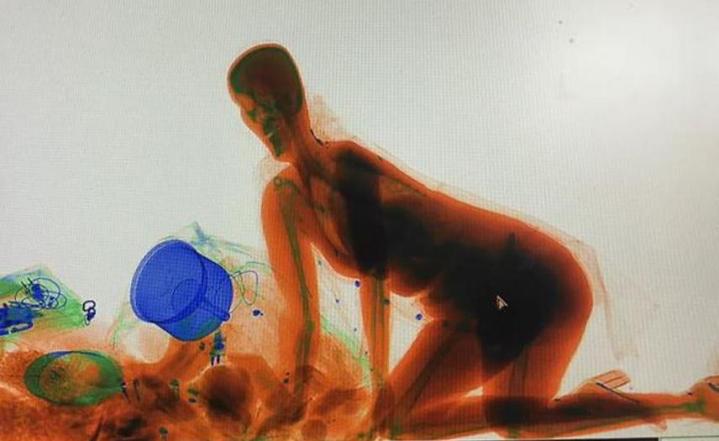Security personnel operating X-ray machines at airports and other transport hubs have a hugely responsible job and need high levels of concentration as they carefully analyze the contents of each item passing through.
And while most will see nothing particularly outstanding during a typical shift, there will be times when an object causes the operator to sit up and take notice. An object like … well … a human.
This is what appeared to happen at Dongguan Railway Station in southern China last weekend. As bags and other items passed through the X-ray machine, the operator suddenly noticed the unmistakeable shape of a person on the monitor, the BBC reported.
The woman at the center of the incident had first placed her suitcase on the conveyor belt before walking through the scanner carrying her handbag. Security insisted she put her handbag on the conveyor belt, too, but apparently, keen to keep hold of it, she hopped onto the belt and disappeared into the machine. Clutching her bag.
Looking like something out of a sci-fi movie, the woman can be seen in the X-ray image as she trundles along on the conveyor belt.
China’s state-run People’s Daily news outlet obtained a security video taken at the machine. It appears to show the moment a security officer told the woman put her handbag on the belt, and then cuts to footage of her emerging from the machine. The security officer can be seen laughing as she comes out.
The odd incident occurred during the Lunar New Year travel rush last weekend.
It’s not clear if she was carrying something special inside her handbag, or if she was simply curious about what the inside of an X-ray machine looks like, though admittedly this seems unlikely. There’s also a chance that she mistook the instructions of the security officer, though again, it’s hard to tell.
Some reports have suggested she may have had a large amount of cash inside the bag and so didn’t want to be separated from it even for a brief moment. Many Chinese who work far from their home cities are known to take some of their earnings back with them on holiday visits.
Now, you yourself surely don’t need telling, but since the story went viral, staff at Dongguan train station have reportedly been advising passengers that it’s really not a good idea to take a ride on an X-ray machine as the radiation it emits is unlikely to do you any good.



